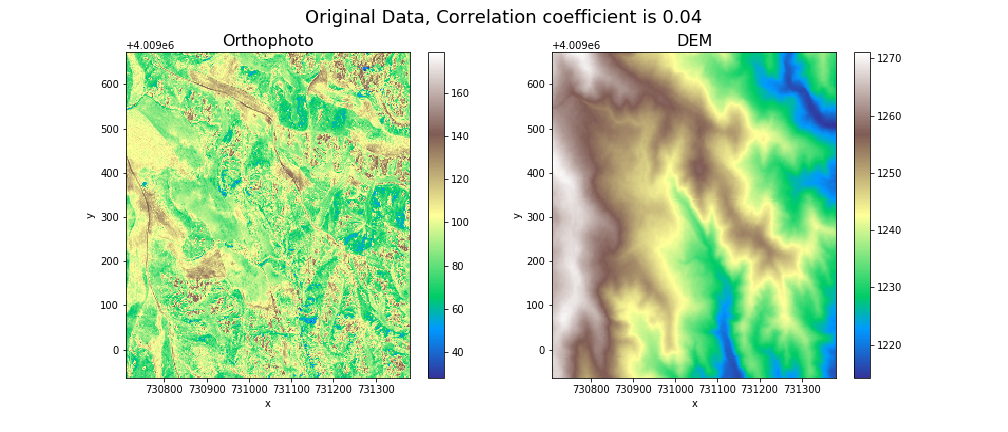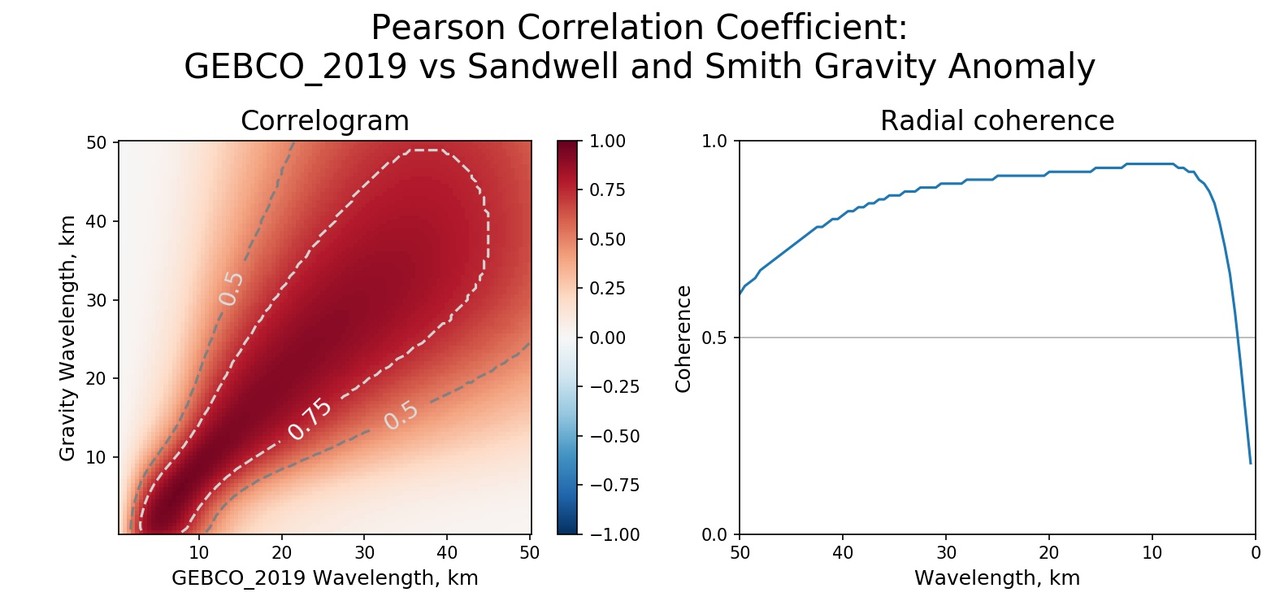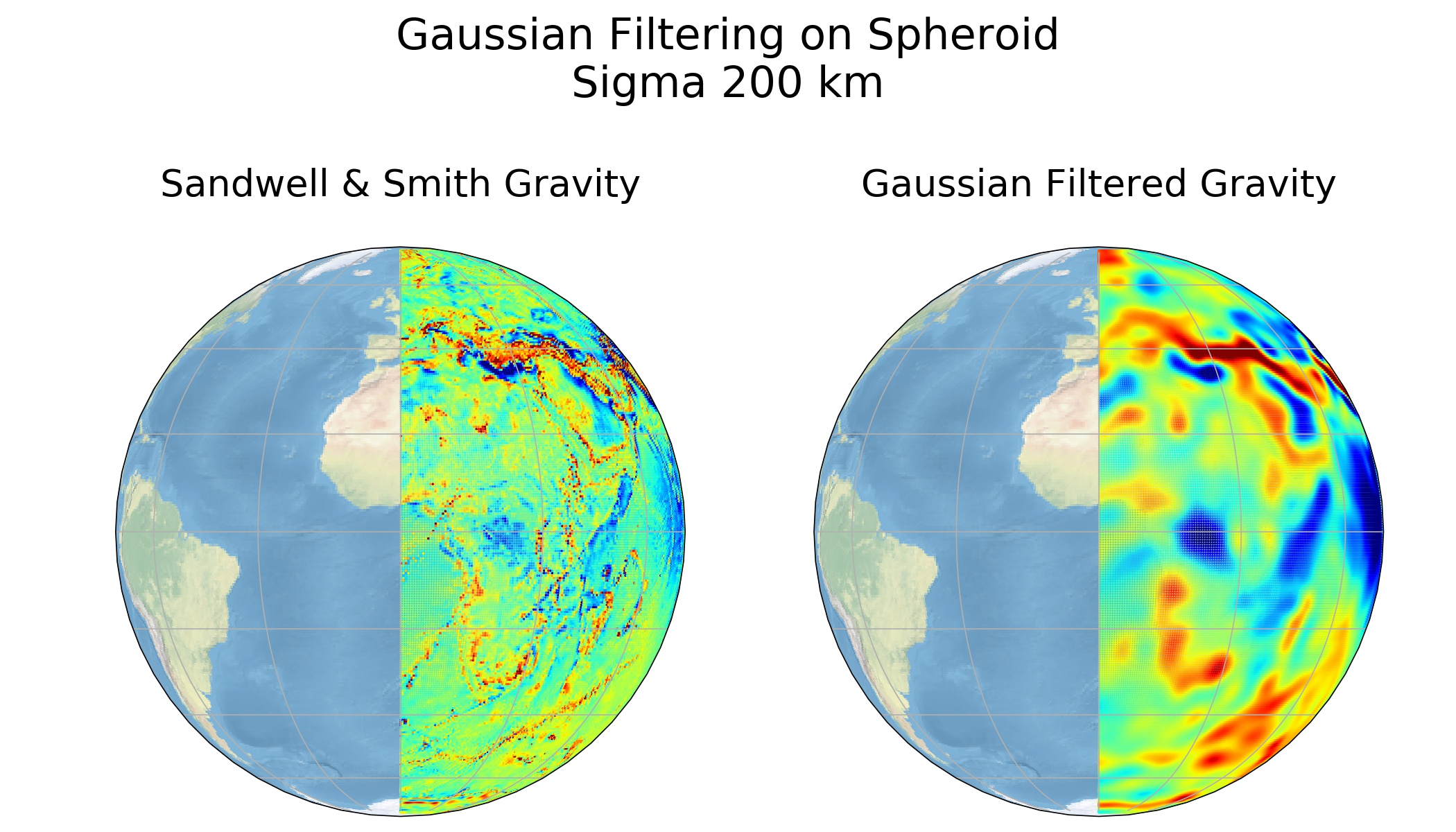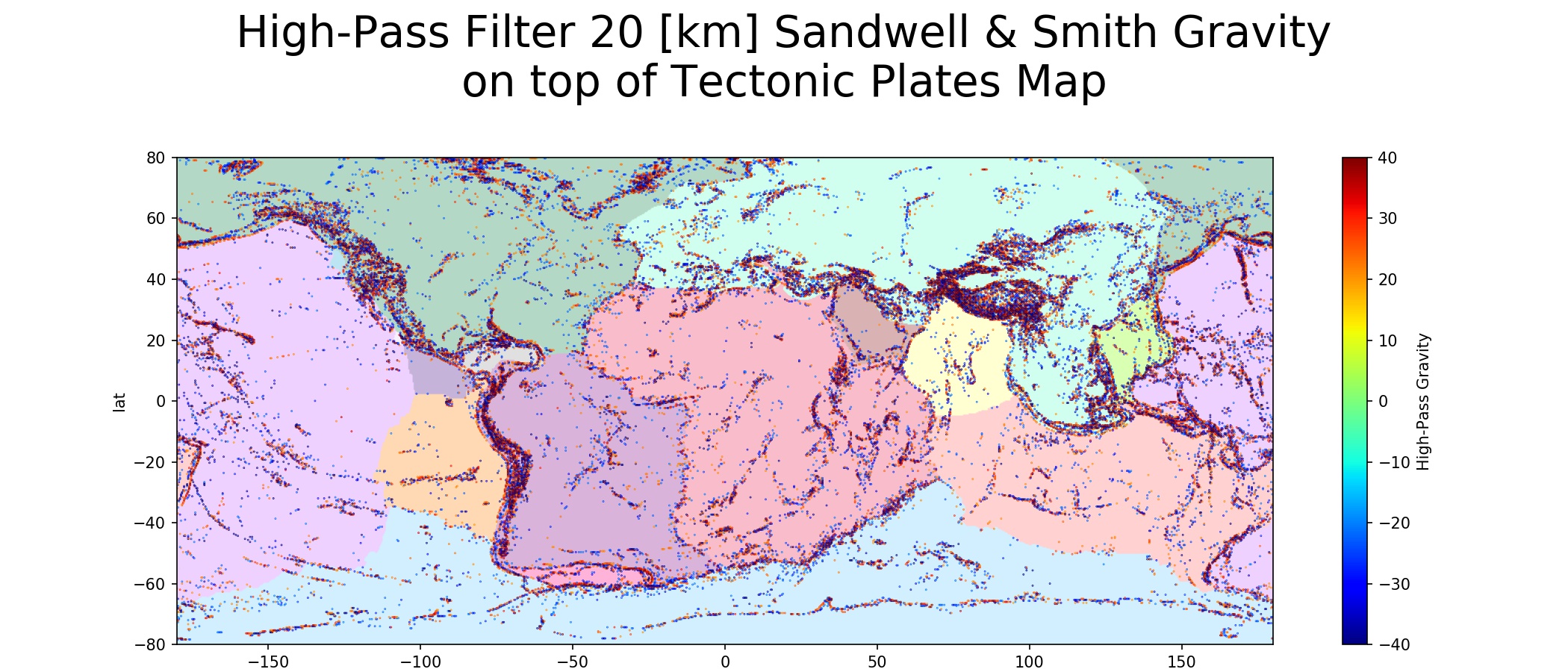Let's see how clearly nature is arranged, and how easy it can be to prove it, while getting acquainted with the myths that geophysicists often believe in (although they were taught the exact opposite, as will be shown below). Open textbooks and articles on geophysics and you will see there Bouguer transformations, expansions in spherical functions and other terms borrowed from different sciences. At the same time, the Bouguer transformation was invented 300 years ago to analyze the results of several dozen measurements, and the shape of our planet is so far from spherical that global models operate with ellipsoids. All this heritage makes it extremely difficult to understand simple and obvious, in general, things and phenomena.

See the relationship between orthophoto and terrain? If yes, then you or a geologist or you can become one: the correlation of components (decomposition into a spatial spectrum) is 41% for a wavelength of 20 m, 58% for a wavelength of 50 m and 99% for a 300 m (Jupyter Python notebook with calculations is available from the links below ). Most geophysicists swear that "you have corrupted spectra" (recorded from nature), ignoring both geophysics and the attached calculations and links to publications.
The first myth, relief and gravity
One of the cornerstone myths is the following, see, for example, the Russian-language Wikipedia page Isostasy (perhaps, after the publication of my article, the wiki page will be corrected):
The most important proof of isostasy is the lack of connection between relief and gravity.
, ( ), ! , , «Deposition and erosion»:
An analogy may be made with an iceberg, which always floats with a certain proportion of its mass below the surface of the water. If snow falls to the top of the iceberg, the iceberg will sink lower in the water. If a layer of ice melts off the top of the iceberg, the remaining iceberg will rise. Similarly, Earth's lithosphere "floats" in the asthenosphere.
— - , , - , . , . , , ...
, (, 2004):
, …
— () , , , . , ! , - " " (, " " ...).
, ( ) 100%, "Radially symmetric coherence between satellite gravity and multibeam bathymetry grids" (Marks and Smith, 2012). () () Sandwell and Smith Gravity Anomaly GEBCO 2019:

() , , — , , , . , , ~40 100%. , (>75%) (>50%) , .
,
, , . ():
— -.
( — , ) — , ? , , , . , :
, .
, ( ) , () . , - (), , . , , 21 ?
, :
, .
, , . , , , . — (, , ). , 20 , , . , .
, WGM2012 () () GEBCO 2019:

, " " — , , . — 100%, 75%, WGM2012 ( Sandwell and Smith Gravity Anomaly, ), , -100%.
"" (, 2009), :
. , , .
, , , . , ( ) . , , , , , .
, ( ) . (, ) .
,
«» — , . , ( ), - . :
-, « » , , , . « » . , , () . — , , ( , , ). , , ! , :
,
, — . — () . , , , , , , .
— , , ,… () — . , , - . .
,
, « » (, , ?) . , , .
, . , . , N (low-pass filter), (high-pass filter) N M (band-pass filter). l L L-l/2, L+l/2. , . , , .
:

, — :

, ( ) , , - (). , , ( , -, , ) .
, . , ( , — ) — , Jupyter Python . (, , ) — ( ), , .
, , . , , ( , , ) — . ( ), , , .
. , " " , - " ":
, . .
— , , ( ) (" ") " " (, ). ! :)
Marks, K.M., Smith, W.H.F., 2012. Radially symmetric coherence between satellite gravity and multibeam bathymetry grids. Mar Geophys Res 33, 223–227. https://doi.org/10.1007/s11001-012-9157-1
.., 2004. .
.., 2009.
Spectral Coherence between Gravity and Bathymetry Grids
WGM2012 spatial components of free-air gravity and topography correlation
Bouguer and Free-Air Gravity Anomalies in terms of spatial spectrum
There is a high correlation between DEM and ortho photos
3D Density Inversion by Circular Hough Transform [Focal Average] and Fractality Index
Gaussian Filtering on Spheroid [Sandwell & Smith]